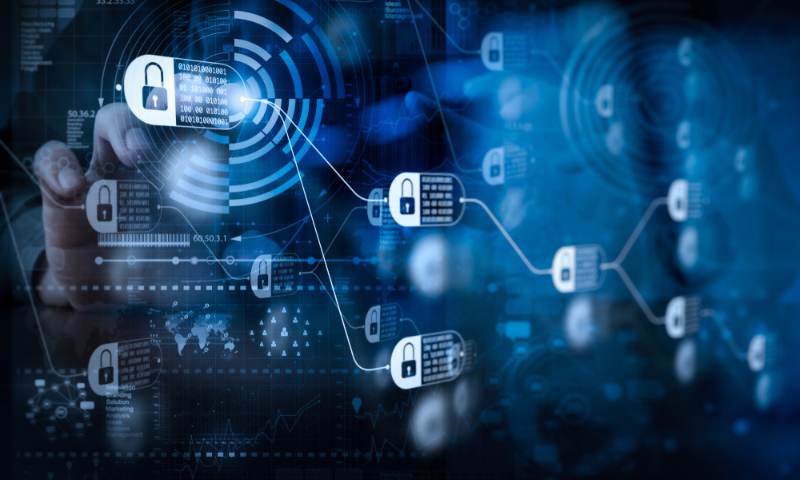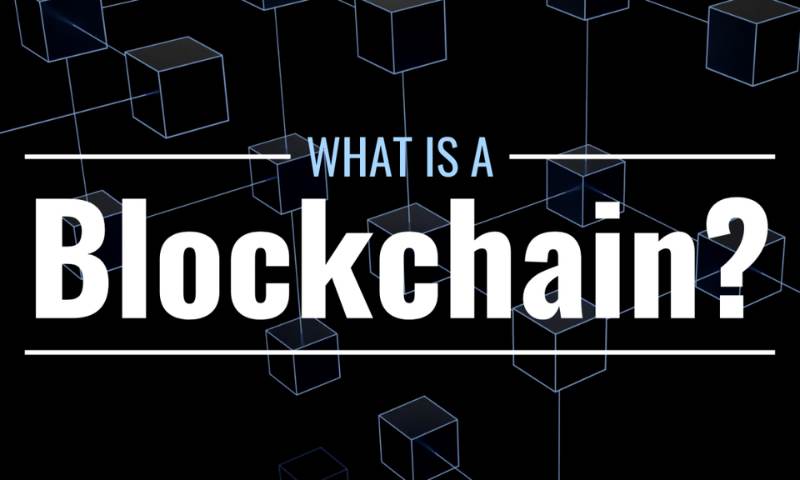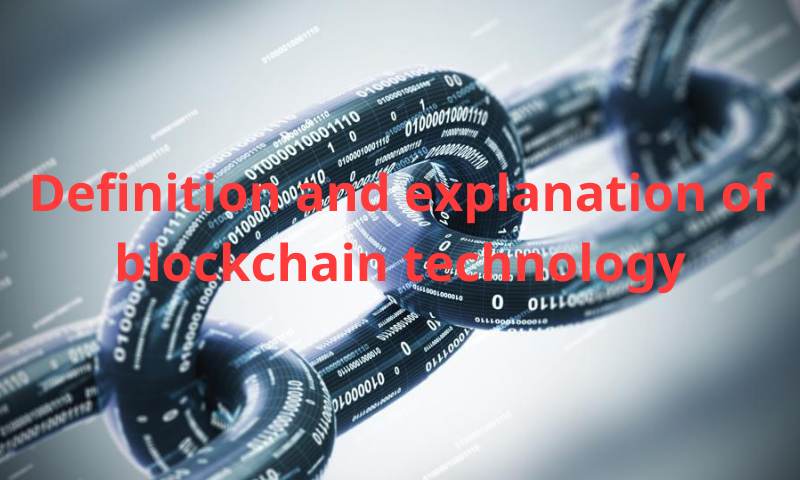Blockchain Unveiled: Demystifying Tech’s Latest Revolution
Have you heard folks buzz about blockchain but can’t pin down what it is? Let’s change that. In this deep dive, we’ll break down the definition and explanation of blockchain technology into bite-size pieces. Imagine a digital ledger that’s open, secure, and gets stronger as it grows — that’s the heart of blockchain. It’s a radical shift in how we think about data and trust, and it’s time you got the full story. Join me, an expert in making the complex simple, and let’s explore how this tech is reshaping our world. From its anatomy of blocks and chains to the smart contracts ushering in a new era of digital deals, we’ll uncover it all. Ready to get clued into the craze that’s setting the pace for the future? Let’s get started.
Understanding the Core of Blockchain Technology
What is Blockchain?
Let’s imagine a big book. This book keeps all the details of money folks send to each other. Now, make it digital and safe so no one can cheat. That’s blockchain. It’s like a ledger, but it’s online. Everyone can see it, but no one can mess with it.
Blockchain works by gathering transactions in groups, called blocks. Each block connects to the ones before and after it. This chain of blocks is where the name “blockchain” comes from. It’s made to be safe and never allow any changes to a block that’s been added to the chain.
The Structure of Blockchain: Blocks, Transactions, and the Chain
Now, let’s break it down more. First, we have transactions. Think of checks in our big ledger. If Alice gives Bob ten dollars, that’s a transaction. We must check it’s real and true. This is where things get smart.
Every block in the chain has a list of transactions. Blocks also have a special code called a “hash.” It’s like a fingerprint. No two are the same and you can’t change it without someone noticing. Blocks get their hashes by solving a tough math problem, which is part of the “mining process.”
After one block fills up with transactions, it’s locked down. Then we start a new block. The new block has its own transactions and a special hash too. But, it also keeps the last block’s hash, making a chain.
This chain is part of a peer-to-peer network. It’s just a bunch of computers talking to each other all over the world. No one owns the whole thing. That’s the “decentralized” part of blockchain. It means no single person or group has control over the ledger.
On the blockchain, there’s also something called “nodes.” Nodes are just the computers that hold a copy of the ledger. They check new transactions and make sure everything’s okay. We need lots of them for security.
Security is super big with blockchain. How do we know a block’s transactions are good? Each block not only has a unique hash but also the hash of the previous block, creating a secure link. If someone tries to change an old transaction, the hash will change. This change messes up the chain, and the network sees something’s wrong.
Another neat thing is the use of “smart contracts.” They’re like robot helpers living on the blockchain. They make deals happen all by themselves when certain rules are met. This way, no need for middle men like banks!
Transparency is another cool part of blockchain. Since all the transactions are there for everyone to see, it’s like having an open book. But here’s the catch – it keeps privacy too. You can see transactions happen, but you don’t have to know who’s behind them.
Lastly, we have the “immutability characteristic.” It’s a fancy term for saying: once something’s in the blockchain, it stays there. Forever. No take-backs or do-overs.
So, each block is a mini ledger of blockchain, full of transactions. They link up to form a chain in the big ledger. And everyone helps keep it secure, accurate, and fair. How cool is that?
Delving into How Blockchain Operates
The Role of Cryptography and Hashing
Imagine blockchain as a digital ledger. This ledger records all sorts of info, but instead of paper, it’s online. Each page in the ledger is a block. It has a list of transactions. Now, what keeps this info safe? That’s where cryptography comes in. Cryptography scrambles data. So, only someone with a special key can read it. This keeps our info safe from hackers.
Each block also gets a unique code called a hash. A hash is like a block’s own fingerprint. It’s a number that comes from the block’s info. If the info changes, so does the hash. This is how we can tell if someone has tried to fiddle with the ledger.
Consensus Mechanisms: Proof of Work vs. Proof of Stake
Now, let’s talk about two big rules that blockchain uses. They are called consensus mechanisms. One is Proof of Work (PoW). The other is Proof of Stake (PoS).
Think of PoW like a race. Computers race to solve a tricky math puzzle. The first computer to do it gets to add a new block, filled with transactions, to the chain. This is mining. Bitcoin uses PoW.
But PoW takes a lot of power. Think of all those computers working day and night. So, we have another rule called PoS. For PoS, you don’t race. Instead, you show you own a part of the currency. If you have more, you might get to add the new block. This does not use much power.
Both of these rules help make sure no one can cheat. They keep the blockchain fair.
So, by now you know blocks are like pages. Each page has a special number to keep it safe. And there are rules to follow when adding a new block. This is what keeps the blockchain running smooth. This amazing tech helps keep our digital info safe. And it’s changing the way we do things online. It might seem a bit tricky, but it’s pretty smart once you get the hang of it!
The World of Blockchain Platforms
Comparing Public and Private Blockchains
Ever played in a park where anyone can join in? That’s like a public blockchain. Think Bitcoin or Ethereum. Anyone can view its data or join as a node – that’s a computer hooked up to the blockchain network. These blockchains are open and secure because all users help maintain them. But they can be slow because so many checks happen with each transaction.
Now picture a fancy club with a strict guest list. This is a private blockchain. Only chosen folks can join. It’s faster and more private than its public buddy. Yet, it’s not open to everyone, which is sometimes okay. Like for a company keeping secrets safe but still sharing info quickly between its offices.
Smart Contracts and Decentralization in Action
Smart contracts are like robot helpers. You tell them what to do and they do it, never getting tired. They live on the blockchain and execute deals when certain rules are met – no lying or cheating allowed! They’ve got you covered, from selling your hit song to renting out your bike.
And here’s cool news: because there are no head honchos in this setup, we call it decentralized. No one person or group can control everything. How’s that for fair play?
To track all the action, we use something called distributed ledger technology. It’s a team effort. These ledgers are like checklists that are shared and updated by many computers in different places. Any change on this list has to be checked and double-checked by many.
In the world of blockchains, whether for your online money or to keep tabs on your gaming gear, these platforms are the secret sauce. They’re the foundations on which all the magic is built. They bring trust into places where we didn’t have it before. With them, we can make sure things are done right and nobody can mess with the records. It’s like having a superhero guard your treasure chest – only it’s real and it’s here to stay.

Blockchain’s Impact and Future Prospects
Blockchain’s Application in Various Industries
Think of blockchain as a super-secure way to store data. This new tech is shaping a lot of industries. Imagine health records stored so that doctors everywhere can see them quick but still keep them safe. Or think about folks buying homes without all the crazy amounts of paper.
Blockchain can help farmers too. They can use it to track their goods from field to store. Shoppers will know exactly where their food comes from. And in music, artists can get paid directly, without middlemen eating into their profits.
In every case, blockchain lets us share info in a way that’s hard to mess with. That’s the beauty of it — once data’s in there, changing it is super tough.
Addressing Scalability and Future Innovations in Blockchain Technology
But it’s not just about today. Blockchain has to get ready for more use in the future too. To handle heaps of data without slowing down is a big deal. Think of a shopping site during a holiday sale. If it slows down, customers bail. Blockchain has to stay fast as it grows.
That’s where fresh ideas come in. Like splitting the chain into smaller parts. Or switching how we add new data to the chain. These changes can help blockchain deal with more action without needing loads of power or taking too long.
Talking about power, we gotta think about the juice blockchain uses. Bitcoin mining loved energy like kids love candy. We need greener ways to power the chain. We’re working on that.
For blockchain to work best, it should play nice with other systems. Like different blockchains talking to each other. This way, you can have a smooth and easy time doing stuff across various chains.
We’re also looking at ways to prove who’s who on blockchain — digital ID. Plus, turning stuff like loyalty points into digital coins that you can use in more places. Think trading your coffee points for music online. Cool, right?
As we build these new tools, the big goal is to make sure they’re safe and useful for everyone. It’s not just about the tech but about how it can make life better. That’s the future we’re building with blockchain.
Alright, let’s wrap this up! First, we dug into what blockchain is and how it’s built from blocks and chains. Next, we took a dive into how it works with all that tricky code and group decisions to keep it safe. Then, we checked out different kinds of blockchain platforms and saw how they can do cool things without bosses.
We also peeked at how blockchain is changing the game in lots of jobs and what’s next for making it even better. All in all, blockchain is a big deal with lots of uses and a bright future. And hey, now you’re in the know! Keep an eye out—this tech is just getting started.
Q&A :
What is blockchain technology and how does it work?
Blockchain technology is a decentralized digital ledger that records transactions across multiple computers in such a way that the registered transactions cannot be altered retroactively. It’s composed of a chain of blocks, where each block contains a number of transactions. Each subsequent block in the chain contains a cryptographic hash of the previous block, a timestamp, and transaction data. This architecture ensures that each transaction is securely recorded and verifiable, providing a high level of security and trustworthiness.
Can you explain the key characteristics of blockchain technology?
Certainly! The key characteristics of blockchain technology include decentralization, immutability, transparency, and security. Decentralization means that the ledger is maintained by a network of nodes rather than a single authority, making it resistant to centralized control or failure. Immutability signifies that once a transaction is added to the blockchain, it cannot be altered or deleted, ensuring data integrity. Transparency allows all participants to view transactions, facilitating trust and verification. Lastly, the use of cryptographic hashing and consensus algorithms make the blockchain secure against tampering and fraud.
What are the main benefits of using blockchain technology?
One of the main benefits of using blockchain technology is the increased trust it provides, as records on the blockchain are transparent and tamper-proof. It also enhances security and reduces the risk of fraud. Besides, the decentralization aspect eliminates the need for intermediaries, potentially reducing costs and increasing efficiency in various processes. Blockchain technology also offers the advantage of traceability, which is especially beneficial in supply chain management to track the authenticity and origin of products.
How is blockchain technology applied beyond cryptocurrencies?
Blockchain technology extends far beyond its most well-known application in cryptocurrencies. It’s utilized in a wide range of sectors including finance, for smart contracts that automatically execute when conditions are met, supply chain management, for tracking the production, shipment, and delivery of products in a transparent way, healthcare, for securely managing patient records, identity verification, for providing a secure and immutable identity for individuals, and even in voting systems, for creating transparent and tamper-proof voting mechanisms.
What is the difference between blockchain and traditional databases?
The difference between blockchain and traditional databases lies primarily in their structure and management. Traditional databases are centralized systems managed by a user or group of users with the requisite permissions. In contrast, a blockchain is a distributed ledger where data is stored across a network of computers and managed collectively by the network participants. While traditional databases can be altered by those with access rights, a blockchain’s history is immutable and irreversible. This creates a permanent and unchangeable record of all transactions that have ever taken place on the blockchain, ensuring greater transparency and security.

